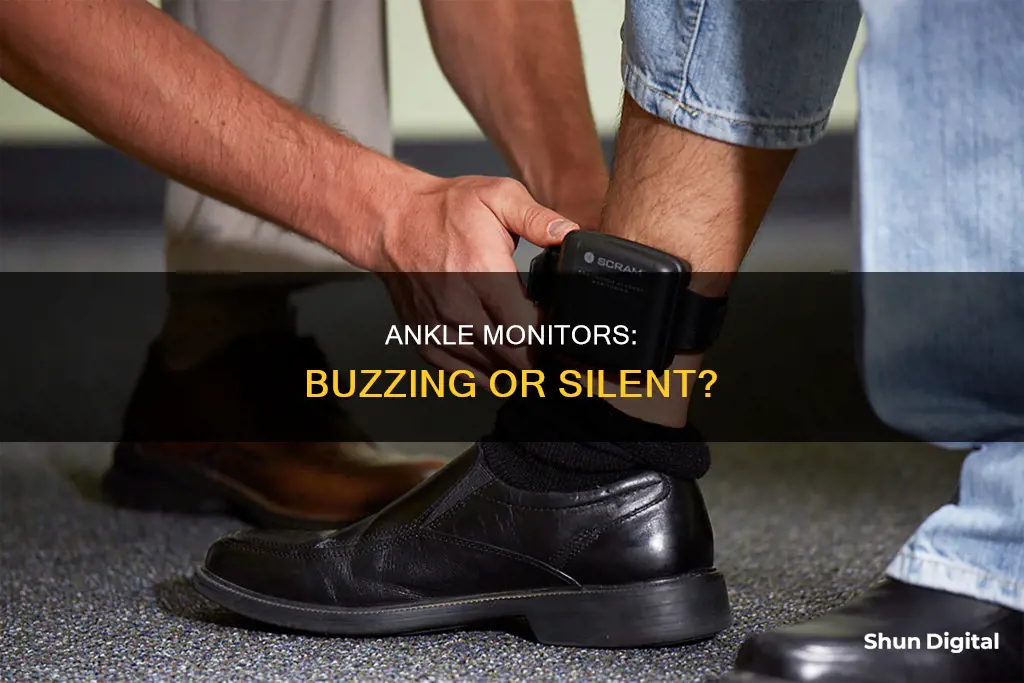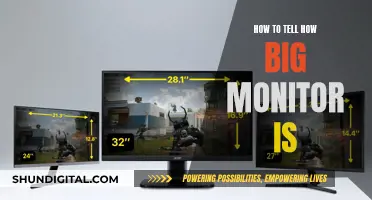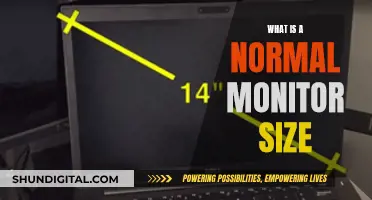
Ankle monitors are often used as an alternative to prison sentences, allowing people to avoid jail time while working through treatment programs or complying with court orders. They are also used for people awaiting trial who are considered a danger to the community or a flight risk. While ankle monitors are typically associated with the criminal justice system, they are also used in immigration cases, for individuals with dementia or Alzheimer's, and even in wildlife conservation efforts. These monitors can track an individual's movements and location, and some can also detect alcohol consumption through sweat. They are designed to be tamper-proof, with features that trigger alerts to monitoring authorities if any unauthorised removal or tampering is detected.
| Characteristics | Values |
|---|---|
| Purpose | To monitor the movements of individuals with restricted travel or activities |
| Users | Criminal offenders, people in immigration cases, those under house confinement, elderly people prone to wander, victims of domestic violence, people enforcing restraining orders |
| Features | Waterproof, lightweight, tamper-resistant, GPS tracking, alcohol detection |
| Power | Rechargeable battery with a battery life of 12 hours to 2.5-3 days |
What You'll Learn

Ankle monitors are used for more than just tracking criminals
Ankle monitors, also known as ankle bracelets, shackles, or tethers, are used for more than just tracking criminals. While they are often associated with the criminal justice system, their applications extend beyond monitoring criminal offenders. Here are some ways in which ankle monitors are used beyond criminal tracking:
- Immigration Cases: Ankle monitors are used to track individuals awaiting court dates or facing immigration proceedings. This ensures that they remain within designated areas and comply with legal requirements.
- House Confinement: Ankle monitors are employed to enforce house arrest or home detention for individuals who are not permitted to leave their residence, either as a condition of their bail, probation, or parole.
- Wildlife Conservation: Ankle monitors are not just for humans! These devices are used in wildlife conservation efforts to track and monitor the movements of animals, aiding in research and protection initiatives.
- Elderly Care: In healthcare settings, ankle monitors are used for elderly individuals, particularly those with conditions like dementia or Alzheimer's, to prevent them from wandering off and getting lost or injured.
- Domestic Violence Prevention: Ankle monitors can be used to enforce restraining orders and ensure that offenders in domestic violence cases maintain a required distance from the victim, providing an extra layer of protection and peace of mind.
- Restricting Movement: Ankle monitors are not limited to criminal cases; they can also be used to restrict the movement of individuals in other contexts. For example, in the case of Anna Sorokin (aka Anna Delvey), a Russian con artist, ankle monitors were used to ensure she complied with the conditions of her release by immigration authorities.
While ankle monitors are often associated with criminal tracking, their applications are diverse and evolving. As technology advances, we may see even more innovative uses for these devices beyond the scope of criminal justice.
IPS Display: How to Check Your Monitor's Panel Type
You may want to see also

They are difficult to remove without detection
Ankle monitors are equipped with sophisticated tamper-resistant features, making them difficult to remove without detection. They are designed to be challenging to tamper with and endure normal wear and tear. Any unauthorised attempt to remove or interfere with the device triggers immediate alerts to monitoring authorities. For instance, the most popular model has a fibre optic cable that runs through the strap and connects to the box on both sides. If this fibre optic cable loses its continuous connection, it will alert the authorities that the strap has been tampered with.
In addition to fibre optic cables, some ankle monitors also use GPS technology and Radio Frequency (RF) signals to transmit data to monitoring centres. This allows for precise location tracking and the ability to set designated areas for the wearer. If the wearer goes outside of the designated area, the device will vibrate and emit a loud tone, notifying them that they are about to violate the conditions of their release. If they do not return to the designated area, the device sends an alert to the authorities.
The difficulty of removing an ankle monitor without detection is further emphasised by the fact that it is considered a crime in many states to tamper with a court-ordered electronic monitoring device. This means that if someone attempts to remove the device and fails, they could face additional legal consequences and jail time.
While it is theoretically possible to remove an ankle monitor without detection, it would require significant resources and technical knowledge. For example, one method involves using a cell repeater and a computer to create a fake tower for the monitor to connect to, sniffing the traffic, and then writing a script to feed fake information to the monitoring system. However, this method is complex and costly, requiring equipment costing under $1500.
In conclusion, ankle monitors are designed with features that make them challenging to remove without detection. Any attempts to tamper with the device are likely to trigger alerts, and the legal consequences of such actions can be severe. While it is possible to circumvent these measures with advanced techniques, it is costly and challenging, and most people under monitoring are not considered flight risks.
Measuring Monitor Response Time: A Quick Guide
You may want to see also

They don't track your every move
Ankle monitors are often misunderstood as devices that track a person's every move. While they do track location, the extent of monitoring varies. Some devices use GPS for live tracking, while others use Radio Frequency (RF) technology to alert authorities if the wearer leaves or enters a designated area. The type of monitoring depends on the specifics of the person wearing the device. For instance, someone on house arrest may be subjected to more frequent tracking, while others may have fewer check-ins.
Real-time tracking is not a continuous process. Monitoring centers establish specific schedules for location checks, and data is analysed and stored at predetermined intervals. The tracking mechanisms are tailored to the individual, with specific boundaries set by the court. For example, a person may be required to stay within a certain radius of their home or adhere to a curfew. If they go outside the designated area, the device will vibrate and emit a loud tone, notifying them that they are about to violate the conditions of their release.
Ankle monitors are not solely used for criminals. While they are prevalent in the criminal justice system, they are also used in immigration cases, for individuals under house confinement, and even in wildlife conservation efforts. They are also employed to ensure the safety of vulnerable individuals, such as the elderly with dementia or Alzheimer's, victims of domestic violence, and to enforce restraining orders.
The misconception that ankle monitors track every move stems from a lack of understanding about their functionality. By clarifying how these devices operate and in what contexts they are used, we can dispel this myth and foster a more informed perspective on their role in society.
Best Places to Buy Omron 3 Series BP Monitor
You may want to see also

They don't infringe upon privacy
Ankle monitors have been the subject of much debate and controversy, with some arguing that they infringe upon personal privacy. However, others argue that they do not pose a privacy concern. Here are some reasons why some believe that ankle monitors do not infringe upon personal privacy:
Ankle monitors are often subject to strict legal regulations that aim to protect individual privacy. The data collected by these devices is typically limited to location information, ensuring that private conversations or activities are not monitored. This data is recorded in compliance with laws and regulations, respecting the rights of the individual.
The primary purpose of ankle monitors is to track physical location, and they are often used as an alternative to incarceration. While they do collect location data, this information is used to enforce house arrest, ensure individuals remain within a designated area, or track individuals under house confinement. This location tracking can also be used to ensure the safety of victims of domestic violence and enforce restraining orders.
Additionally, ankle monitors are used beyond the criminal justice system. They are employed in immigration cases, wildlife conservation efforts, and to assist individuals with dementia or Alzheimer's who are prone to wandering.
Ankle monitors are not designed to constantly track every move. Monitoring centers establish specific schedules for location checks, and real-time tracking is not a continuous process. This means that while they may track an individual's location at certain intervals, it is not a constant, invasive surveillance of their movements.
While some may argue that the design of ankle monitors is intended to be bulky and difficult to conceal, stigmatizing the wearer, others suggest that this is not necessarily indicative of an infringement of privacy. The physical appearance of ankle monitors may evoke negative judgments from the public, but this does not inherently compromise private information or personal activities.
In conclusion, while ankle monitors do collect location data, they operate within legal boundaries that prioritize the protection of individual privacy. The use of ankle monitors extends beyond criminal justice, and their tracking mechanisms are not designed for constant surveillance. The debate surrounding their design and potential stigma is separate from the issue of privacy infringement.
Finding a VESA Monitor: Compatibility and Ease of Use
You may want to see also

They are designed to be comfortable
Ankle monitors have evolved to prioritise the wearer's comfort. While they may initially be uncomfortable, modern devices are designed to be as unobtrusive as possible. Ankle monitors are available in various sizes and styles, allowing the wearer to find a comfortable fit.
To enhance comfort, individuals can wear a light sock under the device. Additionally, wearing loose-fitting clothing can prevent chafing and skin irritation. Applying lotion to the skin around the monitor can also help alleviate dryness and irritation. It is also important to ensure the monitor is snug but not too tight, allowing for free ankle movement without slipping. To prevent slipping, individuals can use moleskin, a soft adhesive padding, between their skin and the anklet.
Ankle monitors are typically waterproof and fairly lightweight. They are designed to be secure without causing unnecessary discomfort. By following simple tips and tricks, individuals can find ways to comfortably live with ankle monitors.
Finding Faulty Monitors: Identifying Bad TPS Screens
You may want to see also
Frequently asked questions
Ankle monitors do not buzz, but they do vibrate and emit a loud tone when the wearer goes outside a designated area.
Ankle monitors are used to track the movements of individuals who have been sentenced to restricted travel or activities. They are often used as an alternative to jail time for low-risk, nonviolent offenders.
Ankle monitors use GPS or Radio Frequency (RF) technology to track the wearer's location. The device transmits a signal to a base unit, usually located in the wearer's home, and alerts authorities if the wearer leaves the designated area.
Ankle monitors are typically worn by individuals who are awaiting trial, on parole, or have been sentenced to house arrest. They may also be used for individuals with substance abuse issues, elderly people with dementia, or victims of domestic violence.







